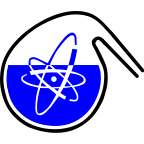Speaker
Description
Uranium mining legacies and enhanced radioactivity in usable groundwater and surface water resources cause environmental hazards. To predict radionuclide migration, for installing effective water purification technology and as decision basis for remediation strategies of the contaminated sites a profound knowledge of uranium speciation in these waters is essential. Predictive modelling of uranium speciation in natural waters uses equilibrium thermodynamic data and adequate speciation software. However, available thermodynamic data sets differ considerably with respect to number of uranium compounds and with regard to completeness and consistency. Hence, model results may vary widely depending on the used data set
The validity of the thermodynamic data for the environmental media affected by uranium mining legacies is of utmost importance. Therefore, a comprehensive and consistent database was established according to current knowledge. The uranium data included in the database is based on the NEA TDB
For all investigated systems at least the two species with the greatest expected relative abundance were detected. Moreover, all species with expected concentrations > 1∙10
[1] J. J. Mahoney, in Annual International Mine Water Association Conference – Reliable Mine Water Technology (IMWA 2013), Golden, Colorado, USA, 2013.
[2] R. Guillaumont, T. Fanghänel, J. Fuger, I. Grenthe, V. Neck, D. A. Palmer, M. H. Rand, Update on the Chemical Thermodynamics of U, Am, Np, Pu and Tc Elsevir, Amsterdam, 2003.
[3] J. N. Brönsted, Journal of the American Chemical Society 1922, 44, 877-898.
[4] D. L. Parkhurst, C. A. J. Appelo, in Water-Resources Investigations Report, 1999.

